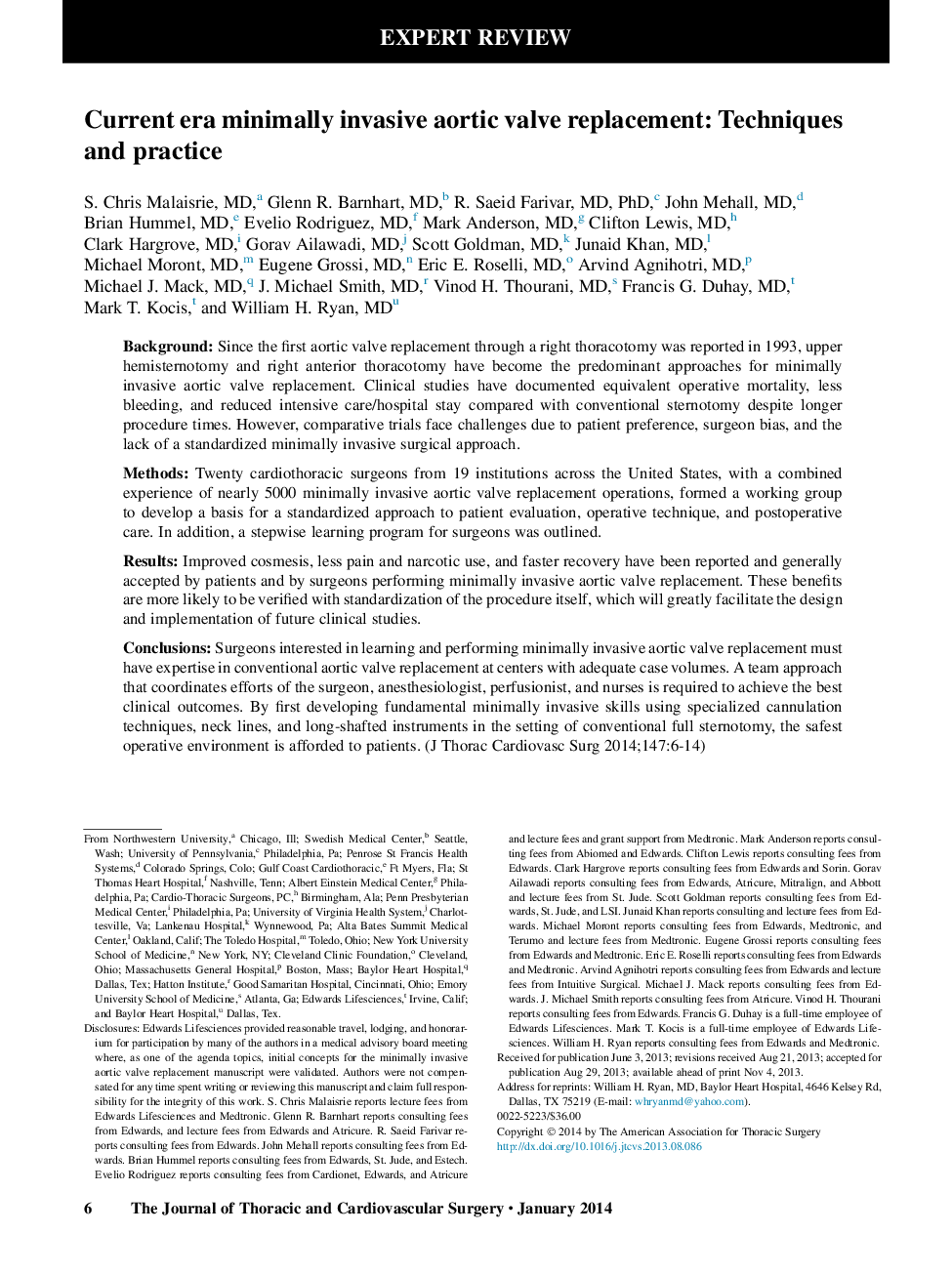| Article ID | Journal | Published Year | Pages | File Type |
|---|---|---|---|---|
| 2980544 | The Journal of Thoracic and Cardiovascular Surgery | 2014 | 9 Pages |
BackgroundSince the first aortic valve replacement through a right thoracotomy was reported in 1993, upper hemisternotomy and right anterior thoracotomy have become the predominant approaches for minimally invasive aortic valve replacement. Clinical studies have documented equivalent operative mortality, less bleeding, and reduced intensive care/hospital stay compared with conventional sternotomy despite longer procedure times. However, comparative trials face challenges due to patient preference, surgeon bias, and the lack of a standardized minimally invasive surgical approach.MethodsTwenty cardiothoracic surgeons from 19 institutions across the United States, with a combined experience of nearly 5000 minimally invasive aortic valve replacement operations, formed a working group to develop a basis for a standardized approach to patient evaluation, operative technique, and postoperative care. In addition, a stepwise learning program for surgeons was outlined.ResultsImproved cosmesis, less pain and narcotic use, and faster recovery have been reported and generally accepted by patients and by surgeons performing minimally invasive aortic valve replacement. These benefits are more likely to be verified with standardization of the procedure itself, which will greatly facilitate the design and implementation of future clinical studies.ConclusionsSurgeons interested in learning and performing minimally invasive aortic valve replacement must have expertise in conventional aortic valve replacement at centers with adequate case volumes. A team approach that coordinates efforts of the surgeon, anesthesiologist, perfusionist, and nurses is required to achieve the best clinical outcomes. By first developing fundamental minimally invasive skills using specialized cannulation techniques, neck lines, and long-shafted instruments in the setting of conventional full sternotomy, the safest operative environment is afforded to patients.
